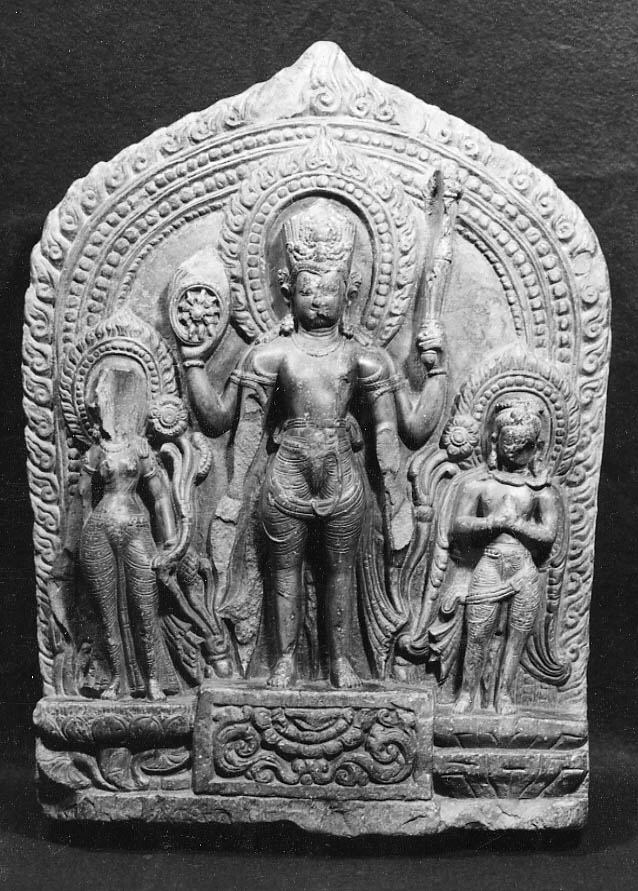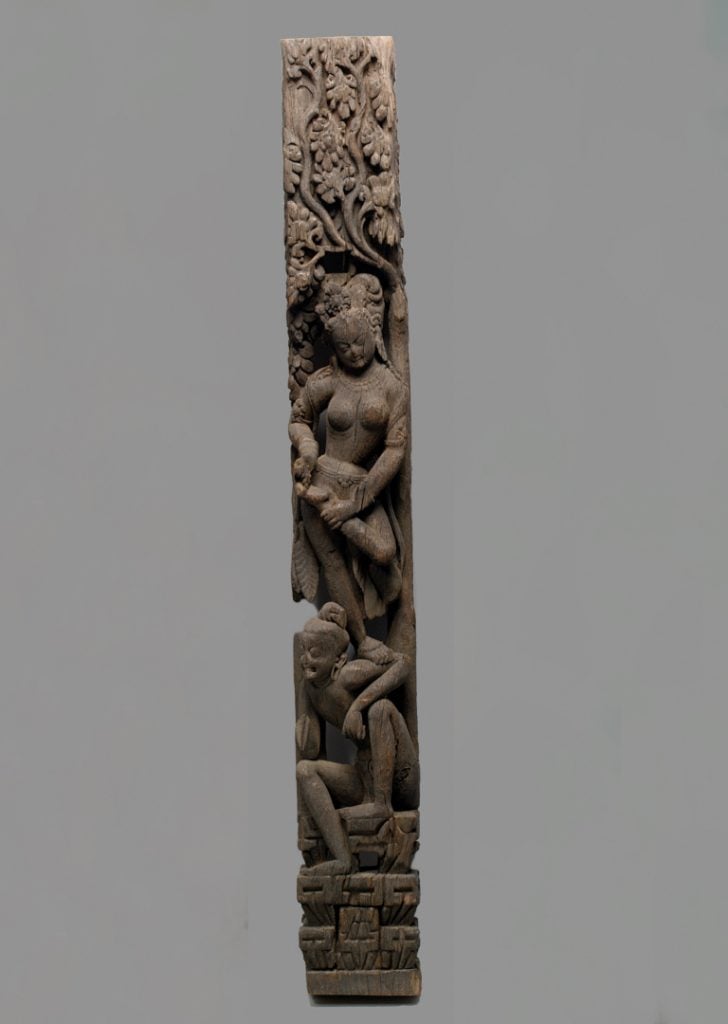Museums & Institutions
The Met Museum Will Restitute Two Ancient Sculptures That Were Stolen From Temples in Nepal
The works had been in the museum's collection since 1988 and '95.

The works had been in the museum's collection since 1988 and '95.

Sarah Cascone

There’s more restitution news from New York’s Metropolitan Museum of Art, which last week announced the return of a 13th-century wooden temple strut and Vishnu Flanked by Lakshmi and Garuda, an 11th-century stone sculpture, to the Nepalese government.
“The Met is honored to collaborate with the Government of Nepal on the return of these two objects,” Met director and CEO Max Hollein said in a statement. “We value the long-standing relationship we have fostered with scholarly institutions and colleagues in Nepal, and we are committed to continuing the ongoing and open dialogue between us.”
The Met purchased the temple strut in 1988, and received the stone sculpture as a gift in 1995 from Evelyn Kossak. It was part of the Kronos Collections, the personal collection of Kossak and her husband Steven Kossak, a longtime Asian art curator at the museum. But looters stole the work from a shrine in the village of Bungmati between 1982 and 1984.
Rumors of the statue’s imminent return had been swirling since March, when it was identified by the International Consortium of Investigative Journalists in a report detailing more than 1,000 potentially looted artworks in the Met’s collection. At the time of the report’s publication, the Met had already removed the object—which was on view as recently as January—from its online catalogue.

The Metropolitan Museum of Art is restituting this 13th-century wood temple strut to Nepal. Photo courtesy of the Metropolitan Museum of Art, New York.
The ICIJ report also identified three other allegedly looted Nepalese objects in the Met’s holdings, including a wooden bracket reportedly stolen from a temple at Bhaktapur, which may be the second work included in the restitution.
The Met owns some 250 antiquities originating in Nepal and Kashmir, but only has records of how three of them left the country. Because Nepal outlawed the export of its antiquities in 1956, the likelihood of works acquired internationally after that date being looted is high.
“Having these Nepali pieces on display, it’s like having a heap of cocaine in the middle of the room,” Nepal Heritage Recovery Campaign adviser Erin Thompson told ICIJ.
The Met last returned artifacts to Nepal in August 2022, with museum officials traveling to the South Asian country to hand over the 13th-century wooden Temple Strut with a Salabhinka and the 10th-century stone sculpture Shiva in Himalayan Abode with Ascetics. (The strut, which was also donated by Kossak, has since been restored to its original home, the Itumbaha monastery in Kathmandu.)
The institution restituted Shiva in Himalayan Abode with Ascetics, a 10th-century stone sculpture, in 2021, as well as a pair of stolen stone sculptures in 2018.
There has been an increased pressure to restitute illegally acquired antiquities in recent years, as well as a number of high-profile raids of Met’s collection. In response, the museum formed an internal provenance-research team this spring.